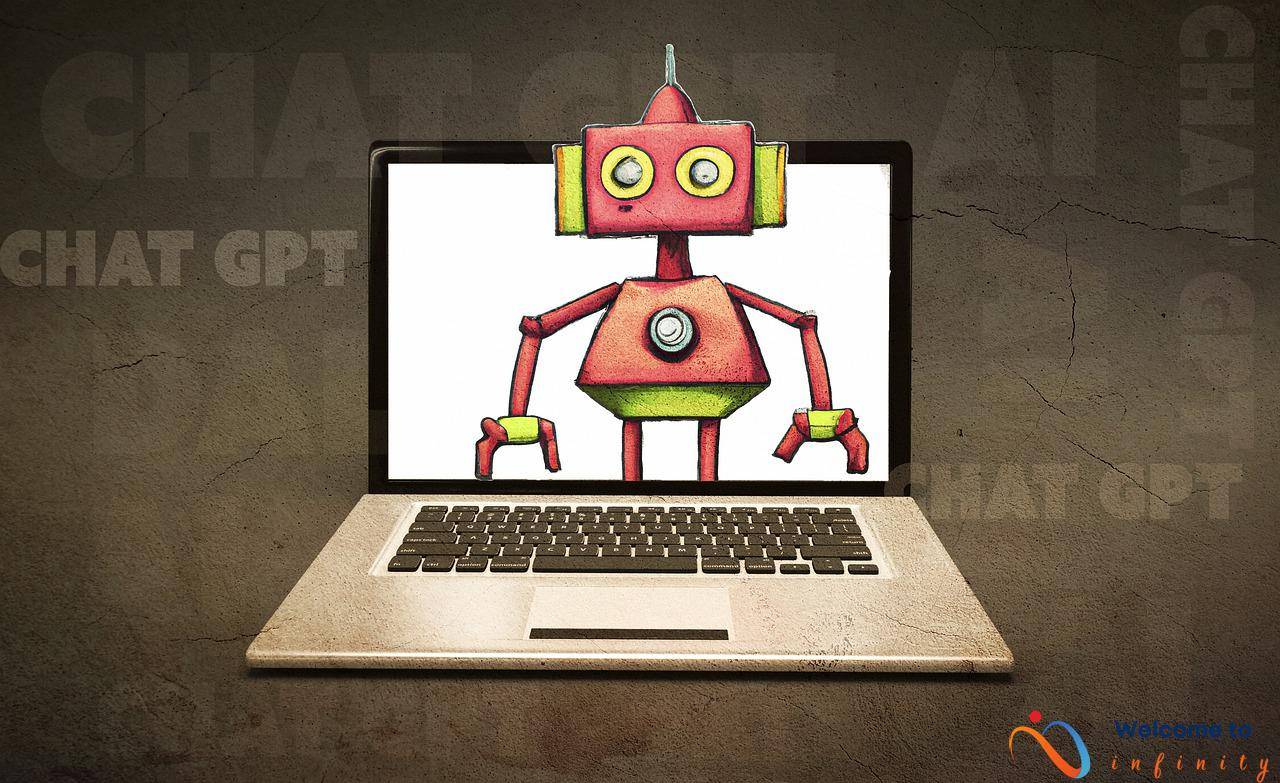Genetic engineering has become a vital component in the field of medicine, agriculture, and biotechnology. With advancements in technology, Artificial Intelligence (AI) is now being integrated into the genetic engineering process to improve precision, efficiency, and accuracy. This article will specifically focus on the revolutionizing effects of AI in the domain of CRISPR technology and bioinformatics.
CRISPR (Clustered Regularly Interspaced Short Palindromic Repeats) technology is a breakthrough technique in genetic engineering used to edit genes. AI-assisted CRISPR editing enhances the accuracy of gene editing and minimizes the risk of introducing errors. AI can also assist in CRISPR screening to identify and map target genes. This improves the screening process and boosts the success rate of gene editing.
Bioinformatics, on the other hand, refers to the application of computational tools and methods to analyze and interpret large-scale genetic data. Integrating AI into bioinformatics helps in speeding up the data analysis process, which would otherwise take days or months. Machine learning algorithms are particularly useful for bioinformatics as they allow us to predict potential drug targets and design new drugs in less time than trial and error methods.
However, the integration of AI in genetic engineering raises ethical and societal concerns. The possibility of manipulating genes before birth, creating designer babies, exploiting the technology for commercial and monetary gain, and the security and privacy of storing vast amounts of genetic data are all concerns that need to be addressed.
This article will further explore the potential of AI in the field of genetic engineering, discuss the ethical and societal implications, and explore solutions to address these issues.
Introduction to Genetic Engineering
Genetic engineering is the direct manipulation of an organism's genetic material, aimed at altering its characteristics or traits. This concept has been around for centuries, dating back to selective breeding of plants and animals. With advancements in technology, genetic engineering has progressed considerably, and today, it holds immense relevance in the fields of agriculture, medicine, and biotechnology.
The discovery of DNA in 1953 laid the foundation for genetic engineering. Since then, significant breakthroughs have been made, including the ability to cut and paste specific genes from one organism to another, which has revolutionized the field of biotechnology. Today, genetic engineering is used to modify crops so that they can resist pests and disease, and to create insulin for human use. It has also enabled scientists to cure diseases such as cystic fibrosis and sickle cell anemia.
- Selective breeding of crops and animals
- Discovery of DNA in 1953
- Ability to cut and paste specific genes from one organism to another
- Modifying crops to resist pests and diseases
- Curing diseases such as cystic fibrosis and sickle cell anemia
With the increasing demand for food production globally, genetic engineering holds immense potential in agriculture, allowing crops to produce higher yields and withstand adverse weather conditions. It also has the potential to combat climate change by developing crops that can capture more carbon dioxide from the atmosphere.
Genetic engineering is a rapidly evolving field that will continue to have a tremendous impact on our society. With its potential for improving health and economic outcomes, it will play a critical role in shaping the world we live in today and the future to come.
CRISPR Technology
CRISPR technology is a revolutionary tool in the field of genetic engineering that acts as a platform for precise and efficient genome editing. It is a technique used for gene editing, enabling precise changes to be made to specific DNA sequences. It is also a bacterial immune defense system that can be programmed to target specific DNA sequences in virtually any organism.
The CRISPR system consists of two components: a guide RNA that directs the Cas9 enzyme to a specific DNA sequence, and Cas9, an enzyme that can cut DNA strands at the targeted site. Together, they can edit the genome of any organism with astonishing ease and accuracy. The potential applications of CRISPR are vast, ranging from medicine to agriculture and beyond.
With the help of AI, CRISPR technology can be improved further by enabling more precise editing. AI algorithms can help in predicting off-target effects and suggest ways to minimize them. AI can also help in designing guide RNAs that are more efficient and prevent off-target effects of CRISPR.
- AI can help in identifying regions of the genome where CRISPR editing would be most effective.
- AI can suggest ways to improve the design of guide RNAs, which can increase the efficiency of the CRISPR editing process.
- AI algorithms can help in assessing the safety and efficacy of CRISPR-based therapies, reducing the time and expense of clinical trials.
The use of AI can be a game-changer in the field of genetic engineering, empowering scientists to conduct more precise, efficient, and cost-effective research. With AI-assisted CRISPR editing, the potential for gene therapy, tissue engineering, and other medical applications is vast. The possibilities are endless, and with the right combination of technology and expertise, we can unlock the full potential of CRISPR technology.
AI-assisted CRISPR Editing
CRISPR technology has revolutionized genetic engineering by allowing scientists to make precise edits to DNA sequences. However, the process is not always efficient and can result in unintended alterations. This is where AI comes in. By using machine learning algorithms and predictive models, AI can assist in improving the precision and efficiency of CRISPR editing.
One way AI can aid in CRISPR editing is through the prediction of optimal target sequences for the Cas9 enzyme, which is responsible for cutting DNA. AI can analyze and learn from vast amounts of data to identify target sequences with high specificity and reduce the risk of off-target effects. This can save time and resources spent on trial-and-error testing.
Moreover, AI algorithms can help in the design of CRISPR guide RNAs, which are responsible for directing the Cas9 enzyme to the targeted DNA sequence. AI can optimize the design of guide RNAs for better specificity, accuracy, and efficiency.
In addition to improving the editing process, AI can also aid in the analysis of the edited DNA sequences. Machine learning algorithms can analyze large-scale genetic data to identify potential mutations and predict their functional consequences. This can help in minimizing unintended effects and reducing the risk of negative consequences.
Overall, by combining CRISPR technology with AI, genetic engineers can enhance the precision and efficiency of gene editing, bringing us closer to unlocking the full potential of genetic engineering.
CRISPR Screening with AI
CRISPR screening is an efficient way to identify genes that are responsible for certain traits or diseases. By combining CRISPR with AI, the screening process can be improved even further. AI can be used to analyze large amounts of genetic data and identify specific target genes that are relevant to a particular disease or trait.
One application of AI-assisted CRISPR screening is in cancer research. With the help of AI, scientists can identify the genes that are responsible for tumor growth and use CRISPR to remove them. This could potentially lead to more effective cancer treatments.
AI can also be used to improve the efficiency of CRISPR screening by reducing false positive and false negative results. By analyzing large amounts of data, the AI can identify patterns and correlations that humans may miss. This can lead to a higher success rate and more accurate results.
- In summary, the use of AI in CRISPR screening can:
- Identify target genes
- Improve the efficiency of the screening process
- Reduce false results
Overall, the integration of AI in CRISPR screening has great potential to advance the field of genetic engineering and improve our understanding of genetic diseases. With further research and development, AI-assisted CRISPR technology could lead to more personalized and effective treatments for a variety of health conditions.
Bioinformatics
Bioinformatics is a field of science that combines biology, computer science, and statistics to study and interpret genetic data. It involves the development and application of computational tools to analyze and interpret large-scale genomic data. Bioinformatics has revolutionized the field of genetics by providing a better understanding of the structure, function, and evolution of genes.
AI can play a crucial role in analyzing and interpreting the vast amounts of genetic data generated through bioinformatics. With the help of machine learning algorithms, AI can identify patterns and relationships in the data that may be difficult to discover manually.
One of the major areas where AI is being used in bioinformatics is genome assembly. Genome assembly is a process where the genetic information is put together to create a complete genome sequence. AI algorithms can help identify and rectify sequencing errors, allowing for faster and more accurate genome assembly.
Another area where AI is making significant contributions is in predicting the impact of genetic variations. Genetic variations are known to cause various genetic disorders, but identifying their impact on the human body can be challenging. Machine learning models can help predict the impact of genetic variations on gene function, allowing for more effective diagnosis and treatment of genetic disorders.
AI can also be used to identify new drug targets. By analyzing massive amounts of genetic data, AI can identify potential protein targets for drug development. This approach can significantly reduce the time and resources required to develop new drugs, ultimately benefiting patients.
In conclusion, the combination of bioinformatics and AI has the potential to revolutionize the field of genetics. With the ability to analyze and interpret vast amounts of genetic data, AI can improve our understanding of genes, identify new drug targets, and accelerate drug development. However, it is essential to address the ethical and societal implications of integrated AI and genetic engineering to ensure that these technologies are developed and used responsibly.
Machine Learning in Bioinformatics
Machine learning is a subfield of AI that focuses on teaching computer systems to learn from data without being explicitly programmed. In bioinformatics, machine learning algorithms can be used to analyze large-scale genetic data, such as DNA sequences and gene expression profiles. These algorithms can identify complex patterns and relationships in the data that would be difficult or impossible for humans to detect.
The benefits of using machine learning in bioinformatics are numerous. Firstly, it can help to improve the accuracy and speed of genetic data analysis. Machine learning algorithms can process vast amounts of data much faster than humans can, and can identify subtle patterns that might be missed by human analysts. This can help to accelerate scientific research and drug development.
Secondly, machine learning can help to predict the effect of genetic mutations on gene expression and protein function. This is particularly relevant in cancer research, where mutations can have a significant impact on disease progression and treatment outcomes. By analyzing large-scale genetic data, machine learning algorithms can identify patterns and correlations that predict which mutations are likely to be harmful and which are benign.
Finally, machine learning algorithms can be used to classify patients based on their genetic profiles. This can help to personalize medical treatments and predict the likelihood of developing certain diseases. For example, machine learning algorithms can be used to identify genetic markers associated with diseases like Alzheimer's and Parkinson's, which can enable early diagnosis and intervention.
In conclusion, machine learning is a powerful tool in bioinformatics that can help to accelerate scientific research, personalize medical treatments and improve health outcomes. While there are some ethical and societal concerns around the use of machine learning in genetic data analysis, these can be addressed with appropriate regulations and guidelines.
AI for Drug Discovery
The traditional drug discovery process is time-consuming and costly, with an estimated cost exceeding $2 billion per drug. On the other hand, AI has the potential to significantly accelerate the drug discovery process by accurately predicting drug targets, identifying new compounds, and designing better drugs.
AI can be used to analyze vast amounts of biological and chemical data, including genetic data, protein structures, and chemical interactions. Machine learning algorithms can then identify patterns and relationships that humans may not be able to detect, leading to new drug candidates.
One example of AI-assisted drug discovery is the use of deep learning algorithms to predict the binding affinity of small molecules to specific targets. The algorithm can rapidly scan millions of virtual compounds and identify the ones with the highest binding affinity, significantly reducing the number of compounds that need to be tested in the lab.
AI can also be used in designing drugs with specific properties or functions. For example, AI algorithms can predict the optimal chemical structure for a drug based on its target, improving its activity, potency, and selectivity while minimizing side effects.
Furthermore, AI can help with repurposing existing drugs for new applications. By analyzing large amounts of data, including clinical data, AI algorithms can identify drug candidates that have already been approved for one indication but could also be effective for another indication. This can save significant time and resources in the drug discovery process while also addressing unmet medical needs.
Overall, AI has the potential to revolutionize the drug discovery process and bring new treatments to patients faster and more efficiently. However, it is important to ensure that safety and ethical considerations are addressed properly, and the benefits of AI-assisted drug discovery are accessible to everyone in need.
Ethical and Societal Implications
The integration of AI in genetic engineering and bioinformatics has raised several ethical and societal concerns that need to be addressed. One of the most pressing concerns is the potential for misuse of these technologies. Genetic manipulation can easily lead to unethical practices such as the creation of genetically modified organisms for purely commercial gains, eugenics, or even genetic discrimination.
Furthermore, AI-integrated genetic engineering can cause unintended consequences that may have irreversible effects on the environment and human health. Therefore, it is crucial to regulate and monitor the use of these technologies to prevent any mishaps. Additionally, there is a need for developing standardized guidelines on the ethical use of AI in the field of genetic engineering, which would help prevent any malicious use of these technologies.
In order to ensure that these technologies benefit society as a whole, there is a need for increased transparency and dialogue between stakeholders, including researchers, policymakers, and the public. It is imperative that the public is well informed about the benefits and potential risks of AI in genetic engineering and bioinformatics. Only then can they make informed decisions about the use of these technologies and contributions to the regulation and control of their use.
Last but not least, much effort is needed to ensure the ethical and responsible use of AI in genetic engineering and bioinformatics. It is a shared responsibility of everyone involved to create a culture of responsible innovation. This includes avoiding any unethical practices such as using these technologies for military gain or disregarding people's privacy rights. Collaboration between different disciplines including computer science biology, and law can help design ethical frameworks for the appropriate use of AI in genetic engineering and bioinformatics.










